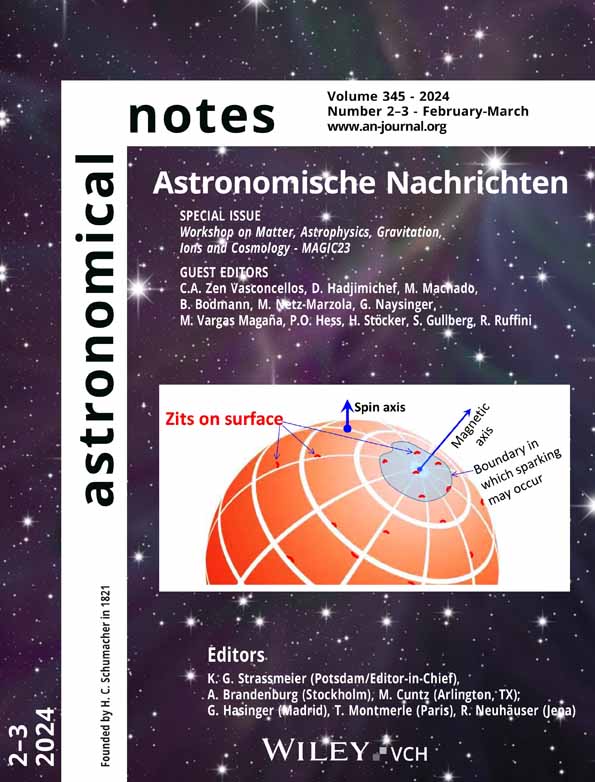Non-symmetrical sparking may hint “zits” on a pulsar surface
Abstract
Pulsar electrodynamics could be relevant to the physics of stellar surface, which remains poorly understood for more than half a centenary and is difficult to probe due to the absence of direct and clear observational evidence. Nevertheless, highly sensitive telescopes (e.g., China's Five-hundred-meter Aperture Spherical radio Telescope, FAST) may play an essential role to solve the problem since the predicted surface condition would have quite different characteristics in some models of pulsar structure, especially after the establishment of the standard model of particle physics. For instance, small hills (or “zits”) may exist on solid strangeon star surface with rigidity, preferential discharge, that is, gap sparking, may occur around the hills in the polar cap region. In this work, with the 110-min polarization observation of PSR B095008 targeted by FAST, we report that the gap sparking is significantly non-symmetrical to the meridian plane on which the rotational and magnetic axes lie. It is then speculated that this asymmetry could be the result of preferential sparking around zits which might rise randomly on pulsar surface. Some polarization features of both single pulses and the mean pulse, as well as the cross-correlation function of different emission regions, have also been presented.




